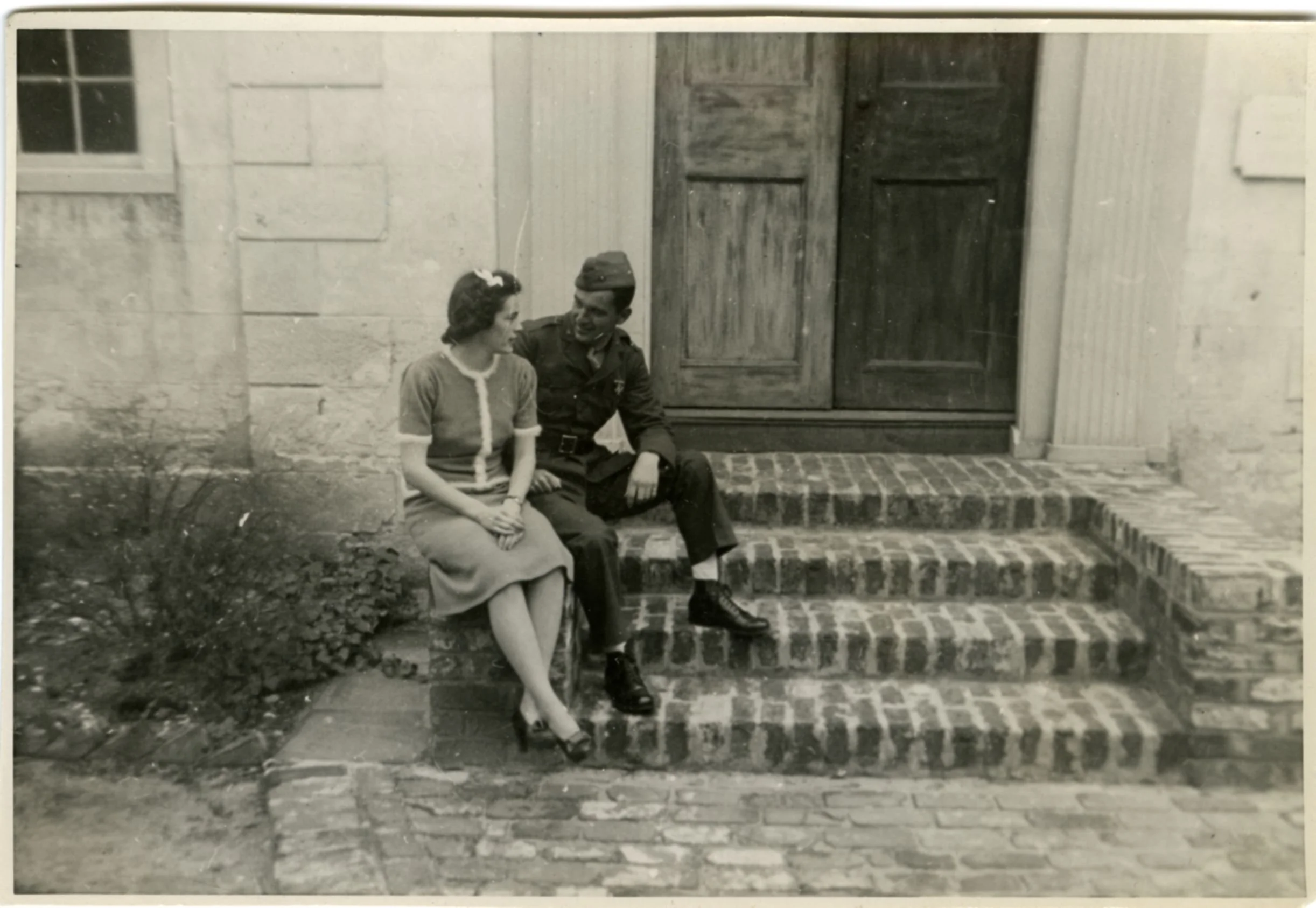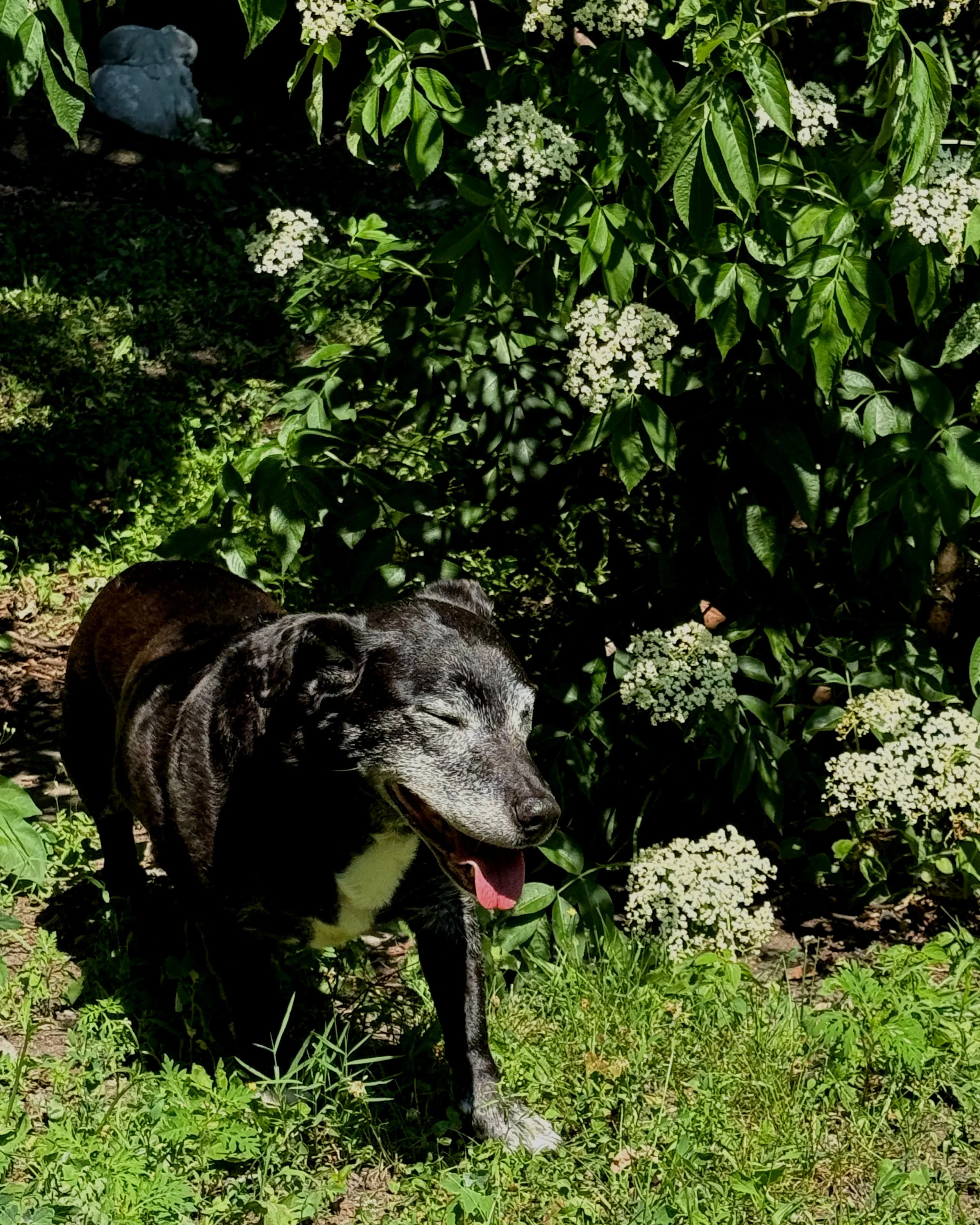
Blog
About the ‘Elderflower’
The Elder tree (Sambucus candensis) is considered a keystone plant, which means it supports and is supported by many ecosystems. It has been said by folk groups that the Elder tree teaches the plants ‘what to do and how to grow,’ and that, without its presence, the local plant community will become confused. The Elder tree is often found in damp or wet areas such as flood plains, ditches, moist forests, and near streams and lake shores.
The Elderflowers arrive in early summer and have a flat-topped mass of creamy-white petals with a distinctly musky and sweet fragrance. Later into the summer and fall, its berries drop and are a deep purple color. These berries contain anthocyanins and research has shown that they help protect our bodies from oxidative stress, which is linked to cancer, brain degeneration, and accelerated aging. I have found beauty in the Elder tree not just for the physicality, but also because it symbolizes a chance to age more gracefully.
Below is a picture of my oldie, Sam, and the Eldertree that is in full bloom in my backyard.
How This All Began
Elderflower Life Recording was born from my dual passions in archiving and care for the elderly. It took time for me to realize that I could build a business of my own. A life’s work can be discovered through the unexpected. After my mom passed away when I was 18, I spent ten months going through her possessions to both cleanse and establish order. I came away with several lessons: our homes are often filled with exhaustive excess, family photographs take a great deal of time and emotional fortitude to organize, and longing for the stories from a deceased loved one can feel agonizing.
In 2015, I jumped at the chance for a position in the Burchfield Penney archives with Heather Gring and Tullis Johnson, hoping that it would fulfill the yen to learn the archival process. I thrived there and constantly delved into a new world that is the power of a living library. When I left that position for elderly care work, I found ways to apply the skills, including building a memoir with a dear client. It was clear to me that there was a need for preservation in older generations. Providing archival and Swedish death cleaning services for families that did not have the time or methodology was something I could take pride in.
When I decided to pursue the idea, I was fortunate to have a close friend who works for the Small Business Development Center. Olivia Harbol became my advisor and confidant and helped me discover all that was available. It astounded me each time I was linked with a new resource. We started with setting a date with the legal team, but also contacted the research department for current trends and rates that were related to my business. With all the questions I could ask Olivia, I was provided with a great base to begin from. Then WNY Legal Center helped establish my LLC and drew up my first contract. To produce a logo for Elderflower Life Recording, Olivia connected me to Stronghold Studios through the marketing referral program. I was practically slack-jawed with the final design and have been warmed by how everything has come together. Without the SBDC, I would likely still be in the initial stages or maybe would have even abandoned it altogether.
A mantra that I’ve had since I started down this path was, “ordinary people start businesses every day.” Throughout the past year, this mantra pushed me through any self-doubt that would occasionally creep in. In strength, I knew that I had not only the idea, but also the experience and keen fascination to attend to a niche market. And I believe that will make all the difference.
What is Swedish Death Cleaning?
A bit about the process and how I can help.
Perhaps the term immediately conjures up morbid intricacies, but the concept of Swedish Death Cleaning is simply a thorough and effective approach to cleaning out your home before it becomes too much of a burden. The key differences from other similar organizational efforts involve finding new homes for our objects that no longer serve us and staying mindful over who would have to do the work if we don’t de-clutter. Unfortunately, if we don’t sort out our homes, it can just make our lives heavier. Swedish Death Cleaning is an attempt to bring lightness and brevity back into ourselves.
We may need to do this type of organizational work for various reasons: downsizing, loss of a partner, empty nesting after children have left, or because as we age we can see that the clutter of our homes has become harder to manage our lives in. Death cleaning is all about honestly living the life you have now. And taking the time to do the clearing and cleaning at your own pace will allow you to understand and see where your items can be better served.
The Gentle Art of Swedish Death Cleaning by Margareta Magnusson is quintessential reading if you are interested in understanding in greater depth. That book, along with Magnusson’s The Swedish Art of Aging Exuberantly, were key in bringing this Swedish approach of organization to the United States. There is also a show of the same name that is narrated by Amy Poehler. It follows individuals through the Swedish Death Cleaning technique with three Swedish experts: an organizer, a designer, and a psychologist. Below is a trailer for the show.
My aim in my work as a death cleaner has been to be a compassionate and guiding hand throughout the de-cluttering system. I am not there to force my hand or override any of your desires for your home. If you’d like me to push more, I will. But I am much more interested in the collaborative work that we can do together to help bring your home in working order. The responsibility is meant to stay in your hands, but I will be there as a guide and assistant to fill in any gaps that you find yourself incapable of doing. My hope is that by having an informative person there through all the steps, you’ll see how much lighter you can feel throughout what can be an incredibly daunting process.
Within the process you’ll encounter items you haven’t seen in years! With one of my clients, we discovered wedding gifts tucked away in her attic crawl spaces that had gone unused and unseen for decades. Instead of keeping them there, I asked if we could put a few of them up throughout her home and she loved the idea! Seeing the gifts around her home brought out gentle memories of her deceased husband and it was something she cherished.
Life will be more pleasant and comfortable once you’re able to rid yourself of some of the abundance. All of the objects in your home belong to you, but, crucially, making the decisions of where those objects should go should also belong to you.
“The [death cleaning] process is service of two large points: to be less afraid of the idea of death because it comes for all of us. And to remember that after you death cleaned, no matter how ancient you become there are always more discoveries.” — Margareta Magnusson

